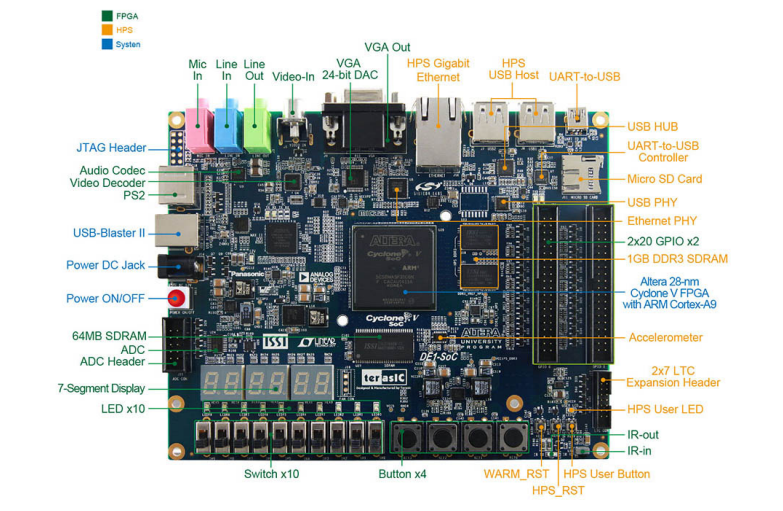Time: 2024-12-30 11:33:58View:
System-on-Chip (SoC) FPGAs, which combine the flexibility of FPGAs with the processing power of ARM-based CPUs, are highly valuable in space applications due to their adaptability, high performance, and ability to function reliably in extreme environments.

1. Satellite Data Processing
Application: Real-time data acquisition and processing from onboard sensors (e.g., cameras, spectrometers, radar).
Demo Example: Image compression algorithms (e.g., JPEG2000) or synthetic aperture radar (SAR) processing on an FPGA fabric while the CPU handles communication protocols.
Benefit: Reduces data volume before downlinking to ground stations, saving bandwidth.
2. Software-Defined Radio (SDR)
Application: Dynamic adjustment of communication protocols for satellites and spacecraft.
Demo Example: FPGA handles modulation/demodulation, signal filtering, and real-time signal processing, while the CPU configures the radio settings.
Benefit: Adaptability to multiple communication standards and frequencies.
3. Fault-Tolerant Computing
Application: Radiation-hardened designs for single-event upsets (SEUs) in space environments.
Demo Example: Triple Modular Redundancy (TMR) implemented on FPGA logic for critical systems.
Benefit: Ensures reliable operations despite high radiation exposure.
4. Onboard Artificial Intelligence (AI) and Machine Learning (ML)
Application: Autonomous decision-making systems for navigation, anomaly detection, and object recognition.
Demo Example: AI inference engine implemented on FPGA fabric, with pre-trained models running on the ARM processor.
Benefit: Real-time decision-making reduces reliance on ground-based processing.
5. Encryption and Secure Communication
Application: Data encryption and secure key management for satellite-to-ground communication.
Demo Example: AES (Advanced Encryption Standard) encryption offloaded to FPGA hardware accelerators.
Benefit: Ensures data integrity and confidentiality during transmission.
6. Real-Time Sensor Fusion
Application: Integrating data from multiple sensors (e.g., gyroscopes, accelerometers, star trackers).
Demo Example: FPGA processes data streams from sensors, while the CPU handles sensor fusion algorithms.
Benefit: Precise attitude and orbital control in spacecraft.
7. High-Performance Scientific Instruments
Application: Space telescopes, spectrometers, and radiation detectors.
Demo Example: FPGA performs real-time signal filtering, noise reduction, and spectral analysis.
Benefit: Improves data quality and enhances scientific discovery.
8. Payload Reconfiguration and Upgradability
Application: Ability to reprogram payload systems post-launch.
Demo Example: FPGA firmware updates sent from ground stations to reconfigure the payload.
Benefit: Extends the mission lifespan and adapts to changing mission requirements.
9. Autonomous Navigation and Control
Application: Spacecraft position estimation, trajectory correction, and docking procedures.
Demo Example: FPGA performs intensive real-time calculations for navigation algorithms, while the CPU supervises the process.
Benefit: Reduces reliance on ground control and increases mission autonomy.
Why SoC FPGAs for Space?
Radiation Tolerance: Built-in error detection and correction mechanisms.
Low Power Consumption: Essential for power-limited environments.
High Performance: Parallel processing capabilities for real-time applications.
Reconfigurability: Adaptability for multi-purpose missions.